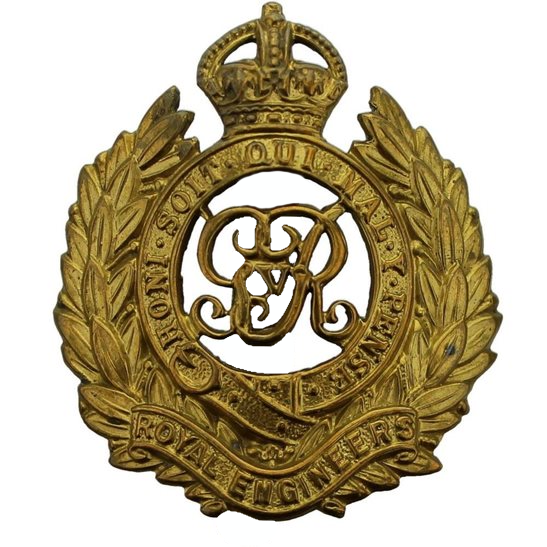Personal Details
Born: September 1872.
Family: The third child of William and Martha Pritchard of Wrexham Road, Whitchurch, Shropshire. Thomas married Sarah Crump on the 16 September 1894 and together they had 9 children – Lizzie, William, Herbert, Ethel, Nellie, Clara Annie, Ernest, Alice and Elsie.
Civilian Occupation: He was a farm labourer. In 1939 he was employed as a builder’s labourer.
Residence: He was living at 9 Bark Hill, Whitchurch, Shropshire when he signed up; he was still living there in 1919. In 1939 he was living at 69 Wayland Road, Whitchurch, Shropshire.
Died: In September 1949 aged 76.
Military Details
Regiment: Royal Engineers
Rank: Pioneer
Service Number: WR/26199 (previously 261211)
Date of Enlistment: 2 April 1917
Date of Discharge: 15 March 1919
Reason for Discharge: Demobilisation
Thomas was awarded the Campaign Medals (British War Medal, and Victory Medal).

The British War Medal (also known as 'Squeak') was a silver or bronze medal awarded to officers and men of the British and Imperial Forces who either entered a theatre of war or entered service overseas between 5th August 1914 and 11th November 1918 inclusive. This was later extended to services in Russia, Siberia and some other areas in 1919 and 1920. Approximately 6.5 million British War Medals were issued. Approximately 6.4 million of these were the silver versions of this medal. Around 110,000 of a bronze version were issued mainly to Chinese, Maltese and Indian Labour Corps. The front (obv or obverse) of the medal depicts the head of George V. The recipient's service number, rank, name and unit was impressed on the rim.
The Allied Victory Medal (also known as 'Wilfred') was issued by each of the allies. It was decided that each of the allies should each issue their own bronze victory medal with a similar design, similar equivalent wording and identical ribbon. The British medal was designed by W. McMillan. The front depicts a winged classical figure representing victory. Approximately 5.7 million victory medals were issued. Interestingly, eligibility for this medal was more restrictive and not everyone who received the British War Medal ('Squeak') also received the Victory Medal ('Wilfred'). However, in general, all recipients of 'Wilfred' also received 'Squeak' and all recipients of The 1914 Star or The 1914/1915 Star (also known as 'Pip') also received both 'Squeak' and 'Wilfred'. The recipient's service number, rank, name and unit was impressed on the rim.

